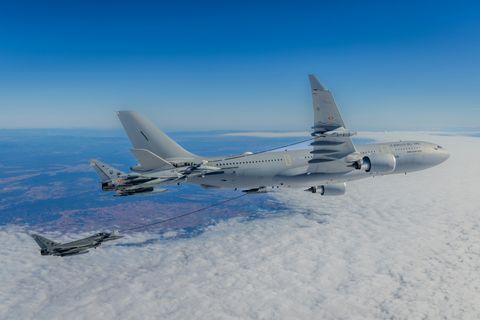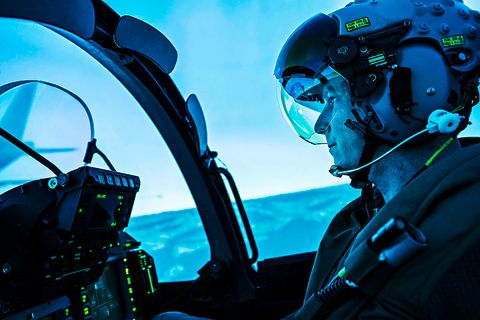Future Combat Air System: Owning the sky with the Next Generation Weapons System

When facing today’s uncertainties, air superiority, which was underpinning western military operations for over 40 years, is no longer a given thing. The playing field is levelled by opponents’ constant investment in integrated air defence systems, hypersonic weapon technologies and low observability technologies. Western air forces need to regain their ability to counter threats by accessing highly contested environments in a scalable, flexible and dynamic way rather than a local and static one.
By intelligently teaming sixth generation manned fighters with unmanned platforms, the Next Generation Weapon System or NGWS will provide European air forces & navies with capabilities well beyond existing fighters. With no agreed definition of a sixth-generation fighter, Airbus’ understanding is that such a New Generation Fighter or NGF will be a more sophisticated and connected platform than what currently exists.
The NGF will set the next level of survivability in terms of passive stealth (signature reduction and electromagnetic emission control) and active stealth (electronic counter measures).

The heart of the NGF will be provided by its extremely capable avionics and sensor suite. The increase in processing power, storage and connectivity will grant the pilot with greatly heightened situational awareness and the ability to rely not only on its own sensors and effectors, but also on other platforms’ ones. Combined with the introduction of artificial intelligence and the ability to team with unmanned platforms, the NGF will become a battlefield management platform capable of operating deep within the enemy airspace.
Powerful engines equipped with thrust-vectoring nozzles combined with high-performance flight control system will ensure the NGF’s manoeuvrability, speed, and range. Innovative effectors will provide the fighter with unprecedented firepower, ranging from stand-off kinetic loads (including hypersonic ones) to directed energy weapons (lasers and microwaves) to electronic warfare capabilities (including cyberattack).
However, more sophistication also means higher development costs leading to a declining number of platforms and/or effectors. Eventually such dangerously low levels result in critical availability levels. This is problematic, as operational studies indicate that penetrating contested environments will require an adequate number of manned platforms. Hence, it is important to set the right level of capabilities for the NGF by taking a holistic approach when right sizing its stealth, velocity, manoeuvrability, range, sensing and effects generation’s capabilities.
The NGF alone will not suffice for the most demanding missions in highly contested environments. To counter such threats, the NGF will team with unmanned platforms called Remote Carriers or RCs acting as force multipliers. Adding capabilities in a scalable and flexible manner will enhance the overall mission effectiveness, efficiency and survivability of the NGWS.

RCs will be a family of unmanned platforms ranging from 200 kilograms for disposable RCs, to under 2 tons for recoverable ones and even several tons in the case of loyal wingmen. Airbus is currently studying and optimising with users their design. The RCs will provide various non-kinetic effects (Target Acquisition and Reconnaissance, Airborne Electronic Warfare) as well as kinetic ones (A2G SEAD/DEAD and Strike).
With “packs” of RCs teaming with NGFs, the NGWS will clearly establish a new operational dimension. An augmented level of effectiveness will be achieved by opening new fields of tactics based on collaborative combat, the use of deception and numeric superiority. Efficiency will improve by ensuring the required mix of capabilities for a given mission is deployed. The NGF will stay at a safe stand-off distance whilst closer RCs deal with the threats, thus keeping the pilots out of harm’s way and increasing the manned platform’s survivability.
Within the NGWS, the Air Combat Cloud or ACC will connect the manned and unmanned platform and provide the teaming intelligence for faster collaborative combat. The ACC will deliver common situational awareness by instantaneously capturing, sharing, merging and processing massive amounts of data from all connected NGFs and RCs. The ACC’s warfare analytics and real-time coordination will provide better situational awareness, tactical options, decisions and collaborative effects
Airbus has a leading role within the Next Generation Weapon System programme programme which will be the core of FCAS. Airbus is Dassault’s main partner for the NGF and the lead for the RCs and the ACC with MBDA and Thales as its respective main partners. This will benefit Airbus’ sites in securing work and maintaining technological excellence for decades to come.


